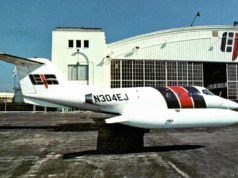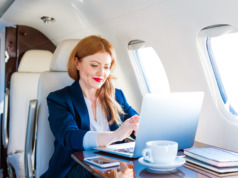The rise of Über and Lyft, the two app-driven rideshare companies which harness non-professional drivers and their cars, has spawned several aviation start-ups trying to emulate their model.
In his cover story, “Alternative Lift,” Rolland Vincent notes that while the economy is recovering, business jets remain underutilized by their owners. So why not make them available to occasional business jet users at a reduced rate?
Because there is a marked difference in operational complexity between autos and aircraft — and that is why the FAA, the European Aviation Safety Agency (EASA), and other international aviation regulatory bodies mandate additional operational safety margins for commercial air charter companies.
The FAA’s Federal Aviation Regulations (FAR) Part 91 covers private flying aboard your own aircraft, and FAR Part 135 governs for-hire air travel aboard business aircraft. The assumption is that, if you are flying aboard your own aircraft, you’ll fly within the limits of your pilots’ skills and experience, as well as your aircraft’s performance capabilities.
But if you are going to offer for-hire air travel to the public, the FAA requires that you adhere to a higher standard. For example, Part 91 jet pilots are required to complete recurrent training annually, while Part 135 crews must train semi-annually. Part 135 also dictates longer runway requirements than are specified by the aircraft manufacturer, which means that some airports available to private operators are not open to chartered jets. Of course, many Part 91 flight departments choose to implement higher operational safety standards, for the owner’s peace of mind and to obtain lower insurance premiums.
The charter industry itself goes even a step further, with three organizations offering safety ratings: Argus, Wyvern, and the Air Charter Safety Foundation. Each requires an independent, third-party audit to earn their respective safety seals of approval, and informed charterers look for these additional commitments to safety from their providers.
Which brings us back to aircraft ride-sharing. Just as every driver must pass a state-mandated driving test to operate a car legally, every pilot passes an FAA test to secure his or her license. Are all car drivers safe drivers, just because they have a license? Hardly. I would not climb into a randomly selected car that happened to be going my way, neither would I fly with an unknown private pilot in an unknown aircraft.
To date there have been only a few private aircraft rideshare operations attempted. BlackJet is in hiatus seeking more capital, and in August the FAA ruled that Massachusetts-based AirPooler is a commercial activity, stating that even paying shared expenses makes these commercial flights subject to more stringent regulation.
Not all pilots and aircraft are trained – nor are all aircraft maintained – equally. You need more than a faceless app to make an informed decision about with whom, and on what aircraft, you choose to fly. BAA
Publisher of Business Aviation Advisor, has nearly 50 years in business aviation including executive positions at aircraft management/charter and ground services companies. He is a past director of the NATA and Corporate Angel Network.





